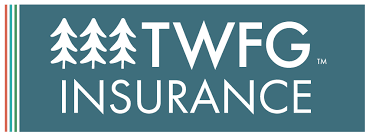
How to Price Your Home for Sale?
Realtor in Houston
The single most important factor to consider when you're selling a house is that you've priced it correctly. You must pick the absolute right price tag based on how much your house is worth if you want it to sell.
The Pricing Dilemma
You don't want to overprice the house because you're going to lose the freshness of the home's appeal after the first two to three weeks of showings. Demand and interest wane after 21 days or so. Of course, there's nothing stopping you from dropping your price later, but this can be a matter of too-little-too-late.
On the other hand, don't worry about pricing it too low because homes priced below market value will often receive multiple offers. This will then drive the price up to the market. Pricing is all about supply and demand. It's part art and part science.
No two agents price property in the same way. Some agents are much better at figuring out how to price your home than others, and most will do a lot of this work for you and prepare a comparative market analysis ahead of time. These are the basic components of the process.
Pull Comparable Listings and Sales
Look at every similar home that's been listed in the same neighborhood as your property over the last three months. Appraisers don't use comps that are older than three months.
The list should be limited to homes within a 1/4 mile to a 1/2 mile radius unless there are only a handful of comps in the general vicinity of the property is rural.
Pay attention to neighborhood dividing lines and physical barriers such as major streets, freeways, or railroads. Don't compare inventory from the "other side of the tracks." Identical homes directly across the street from each other can vary by as much as $100,000 in some neighborhoods. Perceptions and desirability have value.
Compare similar square footage within a 10% variance up or down if possible.
Compare similar ages. One neighborhood might consist of homes built in the 1950s right next to another ring of construction from the 1980s. Values between the two will differ. Make sure you're comparing apples to apples.
Honestly, assess desirability. If you're fortunate enough to own a dream home that will cause buyers to faint upon entering, you might be able to get away with tacking on a premium.
Check out the Sold Comps
Now compare original list prices to final sales prices to determine price reductions. Compare the final list prices to actual sold prices to determine ratios. It's common for homes to sell for more than 100% of list price in a seller's market. Homes generally sell for list price or less in a buyer's market.
Adjust pricing for lot size variances, configuration, and amenities or upgrades.
Withdrawn and Expired Listings
Pull the history for any expired and withdrawn listings to determine whether any of them were taken off the market and relisted. If so, add those days on market back to these listing time periods to arrive at an actual number of days on the market.
Look for patterns as to why these homes didn't sell and note any common factors they might share. Which brokerage had the listing? Was it a company that ordinarily sells everything it lists or was it a discount brokerage that might not have spent sufficient money on marketing the home?
Think about the steps you can take to prevent your home from becoming an expired listing based on this information.
Pending Sales
The ultimate sales prices of these homes are unknown until the transactions close, but that doesn't stop you from calling the listing agents and asking them to tell you how much the property is selling for. Some agents will. Some won't.
Again, make a note of the days on the market. This can have a direct bearing on how long it will take before you see an offer. Examine the history of these listings to determine price reductions.
Active Listings
Bear in mind that sellers can ask whatever they want. That doesn't mean they'll get that price. Tour these active-listing homes so you can see what buyers will see when they visit. Make note of what you like and dislike and the general feeling you got upon entering the homes. Recreate the positive feelings of reception in your own home if possible.
These properties are your competition. Ask yourself why a buyer would prefer your home over any of these others and adjust your price accordingly.
Square Foot Cost Comparisons
The buyer's lender will order an appraisal after you receive an offer so you'll want to compare homes with similar square footage to come as close to the eventual appraised value as possible.
Appraisers don't like to deviate more 25% and they prefer to stay within 10% of net square footage computations. If your home is 2,000 square feet, comparable homes are those that are 1,800 to 2,200 square feet.
Average square foot cost doesn't mean you can simply multiply your square footage by that number, at least not unless your home is average-sized. The price per square foot rises as the size decreases and it decreases as the size increases. Larger homes have a smaller square foot cost and smaller homes have a larger square foot cost.
Market Dependent Pricing
After you've collected all your data, the next step is to analyze that data based on market conditions. For comparison purposes, let's say that the last three comparable sales in your neighborhood were $250,000.
Your sales price might allow some wiggle room for negotiation in a buyer's market, but you'll want to be strong enough and close enough to the last comparable sale to entice a buyer to tour your home. You might need to price your home at $249,900 and settle for $245,000 to sell in this market.
You might want to add 10% more to the last comparable sale in a seller's market. You can ask more than the last comparable sale, and you'll likely get it if there are little inventory and many buyers. That $250,000 home might sell for $265,000 or more.
In a balanced or neutral market, you might want to initially set your price at the last comparable sale then adjust it for the market trend. If the last sale closed three months ago but the median price has edged upwards of 1% per month since then, pricing at $254,500 would make sense.
Source: thebalance

Professional Realtors, Marisol Mendez and Esteban work together and represent early buyers for the purchase or sale of new or used homes in Houston. “I am a Real Estate Professional in the Greater Houston Metropolitan Area. It has been my greatest pleasure to have helped many families close on their properties in the Houston Area. I am committed to making sure that your buying/selling experience is an enjoyable one. I am passionate about what I do and always looking out for the best interest of my clients.”
Realtor in Houston.
AmeriState Realty & Mortgage, Realtor in Houston, Buy a house in Houston, Sell house in Houston, Real estate agent in Houston, Homes for sale in Houston, Homes for rent in Houston, Mortgage, Residential Loans, Construction Loans, Land Loans, Commercial Loans, Industrial Loans





